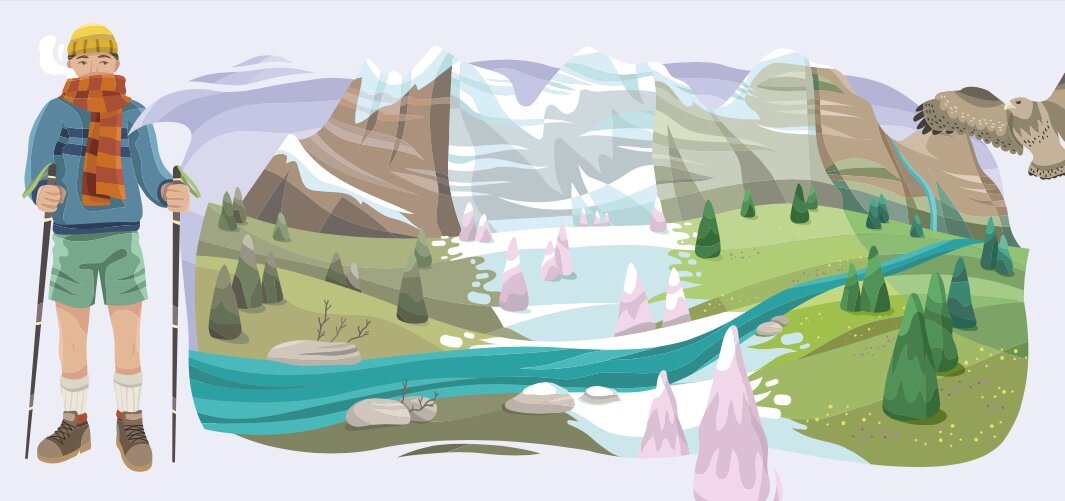The mountains are elements of the landscape rooted in our culture.
I don’t know if you’ve ever thought about it, but for those of us who live in the mountains, the hay meadows, pastures, woods, high-altitude grasslands, rock faces, mountain peaks and glaciers are elements of the landscape rooted in our culture. Our past, present, and future life has revolved, revolves, and will revolve around these components. We can therefore say that it is the mountains that lie within us that have, in part, shaped our thinking, our being, our emotions. Out of love or out of necessity, we depend on them. You too, especially as children, will have drawn the mountains on a sheet of paper and, if you remember, on the peaks we depicted snow and glaciers. After all, for those who live in our region, glaciers – above all – are an ever-present component in our field of vision. In the Adamello-Presanella group you find their maximum expression, and from the Brenta Dolomites you can admire a 180° view of them. If we think about it, glaciers are an element of the landscape with an aesthetic, philosophical, ethical, historical, economic and, last but not least, scientific meaning for all of us.
Glaciers can tell us stories related to mountaineering exploration, the use of glacial melt water to generate hydroelectric energy, summer and winter sports, events related to the White War with the discovery of artefacts, the wealth of unique plant and animal species that live on or around them, tourism that finds peace and pleasure simply in observing them, and much more besides. International scientific literature is providing an increasing amount of solid proof that ongoing global warming is causing anthropogenic emissions of climate-altering gases. Glaciers that are drastically retreating and, in some areas, disappearing, are a sadly iconic symbol of these changes for all of us.

Our planet is losing ice, and this has already been going on for more than a century.
Glaciers can tell us many stories, but we could be the last generation that has the opportunity to hear them. Retreating glaciers are radically changing the physiognomy of the high-altitude landscape, and their loss of volume is not the only evidence. By retreating they free up new areas that are quickly colonised by new organisms, both flora and fauna: more competitive organisms, better adapted to new environmental conditions. However, this is leading to the local extinction of plants unique to these environments. Recent research, carried out by Muse in collaboration with other research bodies, reports that we could lose about 20% of the high-altitude species that live at the edges of the glaciers. Not forgetting the local extinction, already ascertained in some areas of the Dolomites, of certain cold-loving insects that act as key sentinels of climate change for those involved in climate science. We must therefore begin to get used to the idea of a different high-altitude landscape in the near future compared to how we drew it as children. This must involve new strategies to manage, protect, use and enhance these environments. Glaciers have a high pedagogical value, so let’s bring children, young people and our own children to visit them and raise awareness so that small changes in their and our daily actions can lead to a more sustainable future.